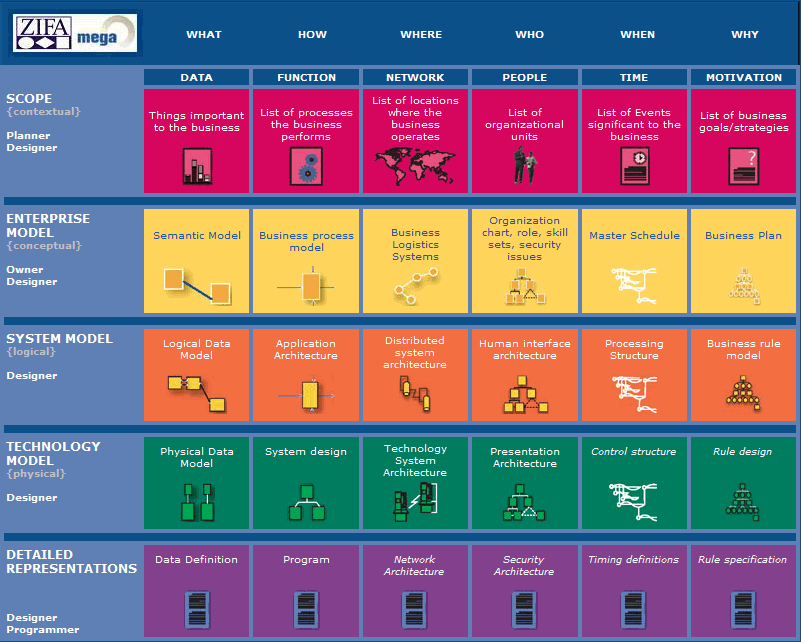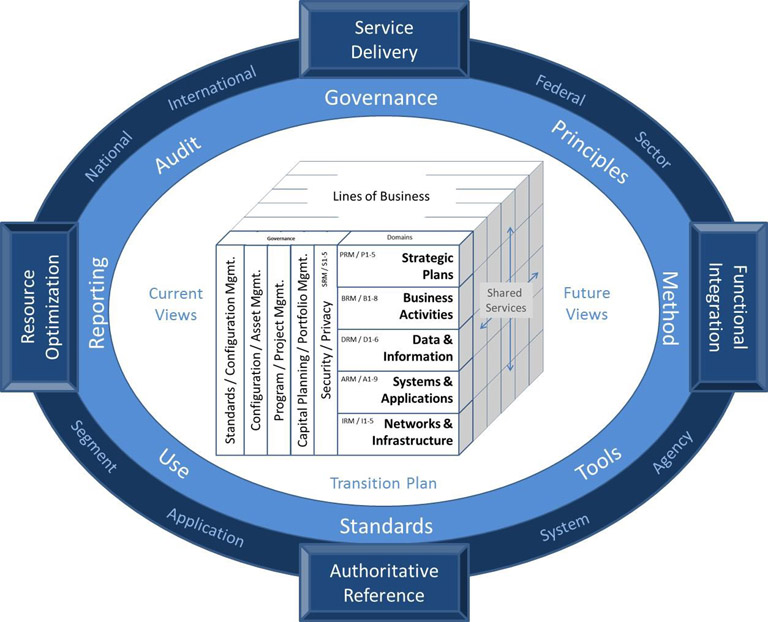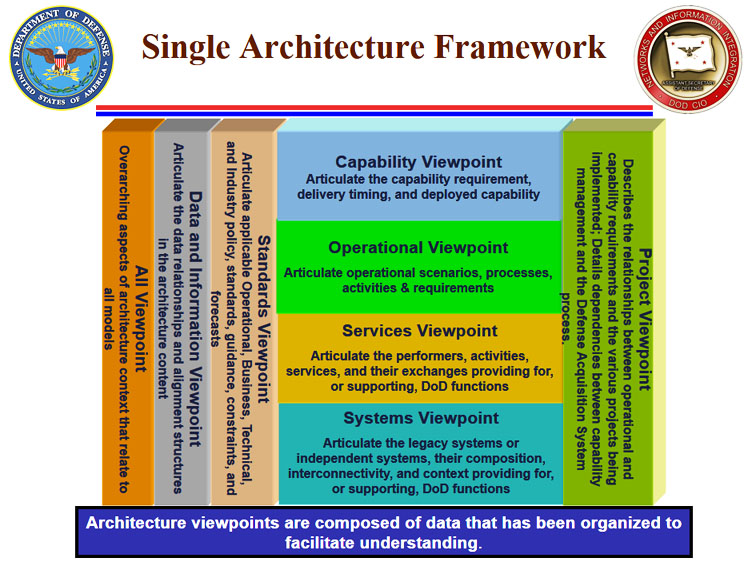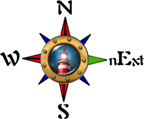There are a number of EA frameworks. The most common and well developed are:
Zachman Framework was created by John Zachman and is more a taxonomy or ontology for classifying and organizing significant elements of an enterprise in artifacts but does not prescribe a method or processes to arrive at them.
It consists of a matrix of horizontal views (what, how, where, who, when, why) of the organization decomposed to 5 progressively lower levels of detail or concern for different stakeholders.

The Open Group Architecture Framework (TOGAF) is an architecture development method (ADM.) In practice it is a process to generate final architecture and can be used in conjunction with other frameworks.
Federal Enterprise Architecture Framework (FEA) is an architecture framework for a federal government. It includes both process and taxonomies. It is implemented through five reference models: Performance (PRM), Business (BRM), Service Component (SRM), Technical (TRM) and Data (DRM) and "provides integration points with other governance areas including strategic planning, capital planning, program management, human capital management, and cyber security." (A Common Approach to Federal Enterprise Architecture, May 2, 2012)

Department of Defense Architecture Framework (DoDAF) is focused on outcomes (supporting missions). It consists of 6 viewpoints and "is fundamentally about creating a coherent model of the enterprise to enable effective decision-making."

Gartner Consulting EA (formerly META Framework) is not a framework but a practice. Although not like any major frameworks, it has made significant contributions to EA through promotions and improvements.


